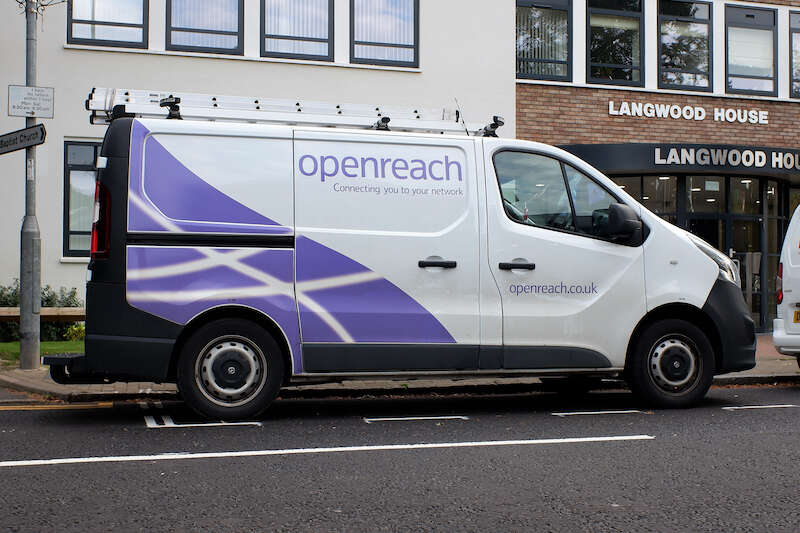Openreach Increases Full Fibre Target to 25m Premises

Openreach, which previously targeted 20 million full-fibre broadband connections by the “mid to late 2020s,” has increased that aim to 25 million and set a deadline of December 2026.
The new ambition was unveiled in parent BT Group’s latest quarterly results, which also revealed a fresh budget for the rollout: £15 billion, increased from £12 billion.
BT Group chief executive Philip Jansen said the redoubled target would “deliver further value to our shareholders and support the Government’s full fibre ambitions.”
Jansen said the enhanced target has other benefits. “It allows us to go faster, beefing up our capacity to build fibre to households and businesses; it allows us to go further, getting fibre to more people including in rural communities, and; it will help fuel UK economic recovery, with better connectivity and up to 7,000 new jobs,” he said.
Openreach owns and operates a significant portion of the UK’s broadband infrastructure, selling ADSL, FTTC and gigabit-capable full-fibre connections through BT and also wholesale to most large internet providers, including Sky, TalkTalk, Plusnet and Vodafone Broadband.
While a handful of alternative networks are laying their own full-fibre, Openreach has easily outpaced them, recently meeting an intermediary target of 4.5 million premises connected by March 2021.
As of April, that figure stood at 4.6 million, with 43,000 new connections being added every week. 1.9 million premises were connected last financial year.
The infrastructure provider will begin ramping up that rollout immediately, to achieve a maximum build rate of 77,000 connections per week or 4 million per year. A new trenching tool is already speeding up installations.
Many of these connections will be in rural areas, many of which are struggling with inadequate broadband speeds. BT previously said 3.2 million of its originally targeted 20 million connections would be in rural or semi-rural areas and market towns.
BT said it is able to fund the additional build through internal resources, while still meeting other commitments, including investing in subsidiary EE’s 5G network and supporting the BT Pension scheme. It will also reinstate its dividend this financial year, after axing it last year for the first time since privatisation in 1984.
However, it suggests that a joint venture with external parties for the final 5 million “could deliver greater further value.”
BT will also benefit from regulatory decisions favouring it made by Ofcom earlier this year and by the “super deduction” tax policy for businesses investing in new plant and machinery assets, introduced in the Chancellor’s 2021 Budget.
According to new figures from Ofcom, 21% of UK households had access to full-fibre, either through Openreach or independent networks, in January 2021. The government is currently targeting 85% gigabit broadband coverage by 2025, a watering down of Boris Johnson’s 2019 pledge to deliver universal full-fibre by that date. Openreach’s plans would take full-fibre coverage to 80% a year after the deadline.
Read on our blog

With the government poised to implement tough new measures to...

Budget broadband provider TalkTalk has been notifying customers via email...

A year-long investigation by charity Citizens Advice has revealed a...

Education Secretary Nadhim Zahawi has announced a new commitment to...
